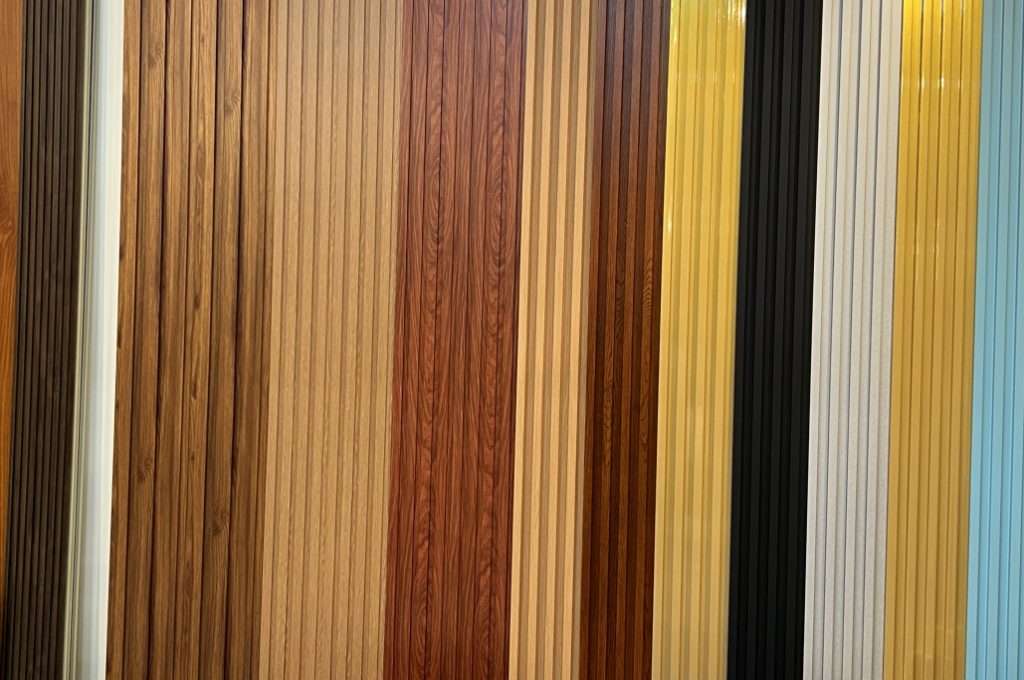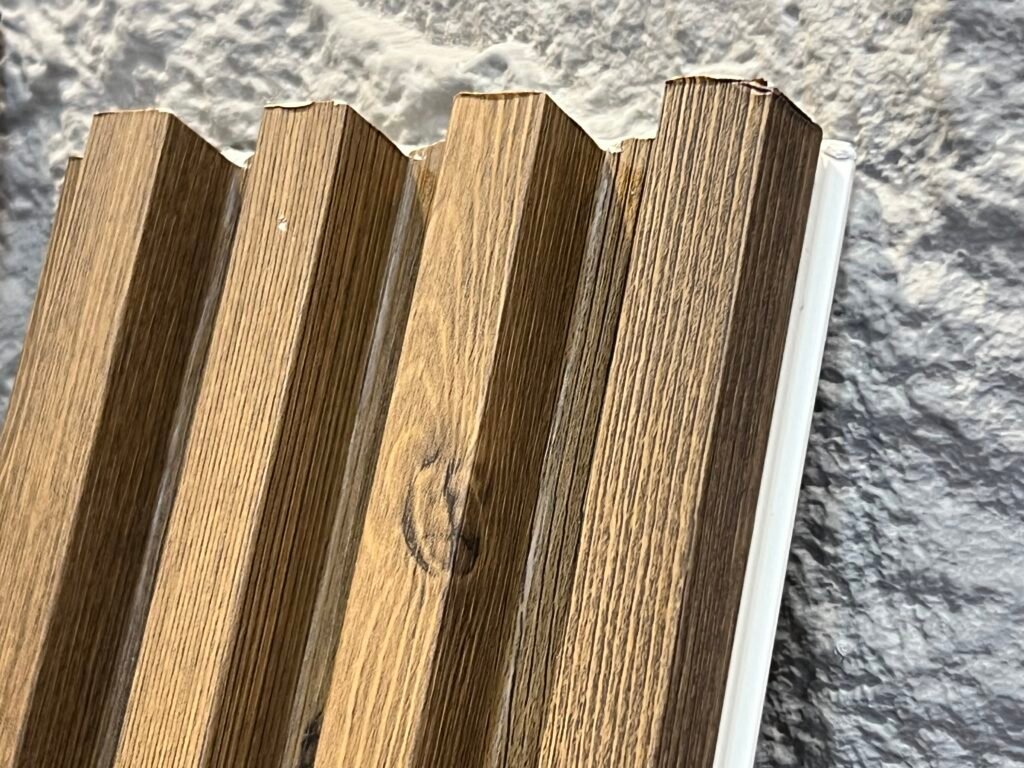What is grille wall panel and it has how many types?
A grille wall panel, also known simply as a grille panel, is a type of architectural feature used in both interior and exterior design to create decorative patterns or screens. These panels consist of a framework of intersecting bars or slats, forming a grid-like pattern. Grille wall panels can serve various purposes, including providing ventilation, dividing spaces, adding visual interest, or enhancing privacy while still allowing airflow and light transmission.
There are several types of grille wall panels, each with its own distinctive design and construction:
- Metal Grille Panels: These panels are typically made of materials such as aluminum, steel, or wrought iron. They can be fabricated using techniques like welding, bending, or casting to create intricate patterns and designs. Metal grille panels are often used for exterior applications due to their durability and weather resistance.
- Wooden Grille Panels: Wooden grille panels are crafted from solid wood or engineered wood products like plywood or MDF (medium-density fiberboard). They can be CNC (computer numerical control) machined or hand-carved to achieve intricate patterns and details. Wooden grille panels are commonly used for interior applications, adding warmth and texture to spaces.
- Plastic or Composite Grille Panels: These panels are made from plastics such as PVC (polyvinyl chloride) or composite materials like WPC (wood-plastic composite). They offer advantages such as lightweight construction, moisture resistance, and ease of maintenance. Plastic or composite grille panels are suitable for both indoor and outdoor use.
- Glass Grille Panels: Glass grille panels feature a framework of metal, wood, or plastic combined with glass inserts. The glass can be clear, frosted, or textured to achieve different visual effects. Glass grille panels are often used in modern or contemporary architectural designs to create sleek and minimalist partitions or screens.
- Fabric or Mesh Grille Panels: These panels consist of a framework overlaid with fabric or mesh material. They are commonly used for decorative purposes in interior design, providing texture and visual interest. Fabric or mesh grille panels can also serve as acoustic or privacy screens when installed in commercial or residential settings.
- The term “grille wall panel” typically refers to a type of wall paneling or cladding designed with a grid-like or grille-like pattern. These panels are commonly used in interior design and architectural applications to provide a decorative and functional element to walls.
- Grille wall panels come in various materials such as wood, metal, plastic, or composite materials. They can be installed as decorative elements, room dividers, or to cover walls partially or entirely, offering aesthetic appeal and often serving functional purposes such as:
- Decorative Design: Grille wall panels are used to add visual interest and texture to interior spaces. The grille pattern can vary from simple geometric designs to intricate patterns, providing a decorative touch to the room.
- Ventilation and Airflow: In some cases, grille panels are used to allow air circulation and ventilation, especially in spaces where airflow is necessary but maintaining privacy is also essential.
- Space Division: They are often utilized as room dividers or partitions, helping to separate spaces while maintaining an open and airy feel within a room.
- Acoustic Properties: Some grille wall panels are designed with materials or patterns that can enhance acoustic properties by absorbing or diffusing sound waves, contributing to better acoustics in a space.
- These panels offer versatility in design and functionality, and they are commonly found in various architectural styles, interior designs, and commercial spaces to achieve both aesthetic and practical purposes.
Each type of grille wall panel offers unique aesthetic and functional characteristics, allowing designers and architects to choose the most suitable option based on the specific requirements of their project.
Today we are talk further about the Point 3 Plastic WPC grille panels
What is WPC Panel ?
WPC stands for Wood Plastic Composite. WPC wall panels are made from a combination of wood fibers or flour and thermoplastics (such as PVC, PE, or PP) along with additives that provide various properties. These panels are designed to mimic the look and feel of wood while offering advantages such as increased durability, moisture resistance, and reduced maintenance requirements.
Here are some key features and benefits of WPC wall panels:
- Appearance: WPC panels often closely resemble the appearance of natural wood, with various grain patterns and colors available. This makes them a popular choice for those who want the aesthetic appeal of wood without its maintenance drawbacks.
- Durability: WPC panels are highly durable and resistant to rot, decay, and insect damage. Unlike natural wood, they do not warp, crack, or splinter easily, making them suitable for both indoor and outdoor applications.
- Moisture Resistance: WPC panels have excellent moisture resistance, which makes them ideal for use in environments prone to humidity or moisture, such as bathrooms, kitchens, and outdoor areas.
- Low Maintenance: WPC wall panels require minimal maintenance compared to natural wood. They do not need to be painted, stained, or sealed regularly, and they can be easily cleaned with water and mild detergent.
- Environmentally Friendly: WPC panels are often made from recycled materials and are themselves recyclable at the end of their lifespan. Additionally, they require fewer chemicals and resources to manufacture compared to traditional wood products.
- Ease of Installation: WPC wall panels are typically lightweight and easy to install, using methods such as adhesive, screws, or interlocking systems. This makes them suitable for DIY projects or professional installation.
- Insulating Properties: Some WPC panels offer insulation benefits, helping to regulate indoor temperatures and reduce energy consumption for heating and cooling.
Overall, WPC wall panels offer a versatile and sustainable alternative to natural wood for interior and exterior wall cladding applications, providing the aesthetic appeal of wood with enhanced durability and low maintenance requirements.
WPC panel is made up of what material ?
WPC (Wood Plastic Composite) panels are typically composed of a mixture of wood fibers or flour and thermoplastics, along with various additives to enhance specific properties. Here’s a breakdown of the typical materials used in the production of WPC panels:
- Wood Fibers or Flour: These are derived from wood scraps, sawdust, or wood chips obtained from lumber mills or woodworking processes. The wood fibers are often ground into a fine powder or mixed with other additives to create a homogeneous blend.
- Thermoplastics: The most common thermoplastics used in WPC panels include polyethylene (PE), polypropylene (PP), and polyvinyl chloride (PVC). These plastics serve as a binding agent and provide structural integrity to the composite material. The choice of thermoplastic can affect the properties of the final product, such as flexibility, durability, and resistance to environmental factors.
- Additives: Various additives are incorporated into the WPC formulation to enhance specific characteristics. These additives may include:
- Stabilizers: To improve the resistance of the WPC panels to heat, UV radiation, and weathering.
- Lubricants: To facilitate processing and improve the flow of the material during manufacturing.
- Pigments and Colorants: To add color and aesthetic appeal to the panels.
- Coupling Agents: To improve the adhesion between the wood fibers and thermoplastic matrix, enhancing overall strength and durability.
- Flame Retardants: To improve the fire resistance of the panels.
- Antioxidants: To protect the material from degradation caused by exposure to oxygen and heat.
By adjusting the composition and ratio of these materials, manufacturers can tailor the properties of WPC panels to meet specific performance requirements, such as moisture resistance, dimensional stability, and durability. The combination of wood fibers and thermoplastics in WPC panels results in a material that exhibits the natural appearance and workability of wood, combined with the durability and low maintenance of plastic.

Grille wall panels have gained popularity in modern interior design due to several reasons:
- Aesthetic Appeal: Grille wall panels offer a visually appealing and sophisticated look to interior spaces. They come in various designs, patterns, and materials, allowing for customization to match different decor styles, from traditional to contemporary.
- Texture and Depth: The intricate patterns and textures of grille wall panels add depth and dimension to walls, contributing to a more dynamic and interesting visual effect compared to plain walls.
- Versatility: These panels offer versatility in design and application. They can be used as decorative accents, room dividers, or to cover entire walls, allowing for creative and flexible interior design solutions.
- Functional Purpose: Grille wall panels serve more than just aesthetic purposes. They can act as space dividers, allowing for the segmentation of areas while maintaining an open feel. Additionally, they can improve airflow and ventilation in certain spaces.
- Customization and Personalization: With a wide range of materials, colors, sizes, and patterns available, grille wall panels offer opportunities for customization, allowing individuals to tailor the design according to their preferences and the specific needs of the space.
- Modern Architectural Trends: Contemporary architectural trends often favor clean lines, geometric patterns, and textures. Grille wall panels align with these modern design preferences, making them a popular choice for architects and interior designers.
- Enhanced Acoustic Properties: Some grille wall panels are designed with materials that can improve a room’s acoustics by diffusing or absorbing sound, making them practical choices for spaces that require better sound management.
Overall, the combination of aesthetic appeal, functionality, versatility, and modern design trends contributes to the popularity of grille wall panels in contemporary interior design, as they offer a unique and stylish way to enhance the look and feel of various spaces.




